Transcriptomic and proteomic landscape of mitochondrial dysfunction reveals secondary coenzyme Q deficiency in mammals
- PMID: 29132502
- PMCID: PMC5703644
- DOI: 10.7554/eLife.30952
Transcriptomic and proteomic landscape of mitochondrial dysfunction reveals secondary coenzyme Q deficiency in mammals
Abstract
Dysfunction of the oxidative phosphorylation (OXPHOS) system is a major cause of human disease and the cellular consequences are highly complex. Here, we present comparative analyses of mitochondrial proteomes, cellular transcriptomes and targeted metabolomics of five knockout mouse strains deficient in essential factors required for mitochondrial DNA gene expression, leading to OXPHOS dysfunction. Moreover, we describe sequential protein changes during post-natal development and progressive OXPHOS dysfunction in time course analyses in control mice and a middle lifespan knockout, respectively. Very unexpectedly, we identify a new response pathway to OXPHOS dysfunction in which the intra-mitochondrial synthesis of coenzyme Q (ubiquinone, Q) and Q levels are profoundly decreased, pointing towards novel possibilities for therapy. Our extensive omics analyses provide a high-quality resource of altered gene expression patterns under severe OXPHOS deficiency comparing several mouse models, that will deepen our understanding, open avenues for research and provide an important reference for diagnosis and treatment.
Keywords: Cellular transcriptome; Coenzyme Q biosynthesis; Mitochondrial gene expression; Mitoproteome; OXPHOS dysfunction; One-carbon pathway; biochemistry; cell biology; mouse.
Conflict of interest statement
No competing interests declared.
Figures



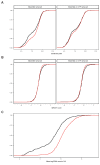
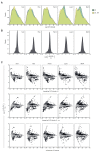
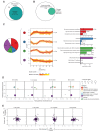
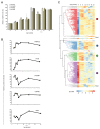
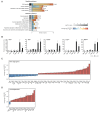

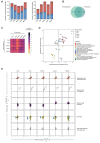
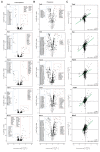

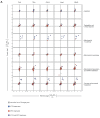

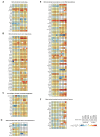
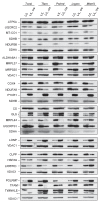
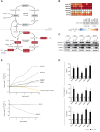



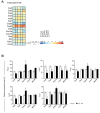
Similar articles
-
The molecular genetics of coenzyme Q biosynthesis in health and disease.Biochimie. 2014 May;100:78-87. doi: 10.1016/j.biochi.2013.12.006. Epub 2013 Dec 16. Biochimie. 2014. PMID: 24355204 Review.
-
Mitochondrial respiration without ubiquinone biosynthesis.Hum Mol Genet. 2013 Dec 1;22(23):4768-83. doi: 10.1093/hmg/ddt330. Epub 2013 Jul 11. Hum Mol Genet. 2013. PMID: 23847050 Free PMC article.
-
Intracellular cholesterol accumulation and coenzyme Q10 deficiency in Familial Hypercholesterolemia.Biochim Biophys Acta Mol Basis Dis. 2018 Dec;1864(12):3697-3713. doi: 10.1016/j.bbadis.2018.10.009. Epub 2018 Oct 5. Biochim Biophys Acta Mol Basis Dis. 2018. PMID: 30292637
-
Coenzyme Q10 modulates sulfide metabolism and links the mitochondrial respiratory chain to pathways associated to one carbon metabolism.Hum Mol Genet. 2020 Nov 25;29(19):3296-3311. doi: 10.1093/hmg/ddaa214. Hum Mol Genet. 2020. PMID: 32975579 Free PMC article.
-
Cellular Models for Primary CoQ Deficiency Pathogenesis Study.Int J Mol Sci. 2021 Sep 22;22(19):10211. doi: 10.3390/ijms221910211. Int J Mol Sci. 2021. PMID: 34638552 Free PMC article. Review.
Cited by
-
Role of ferroptosis in the pathogenesis of heart disease.Front Physiol. 2024 Sep 10;15:1450656. doi: 10.3389/fphys.2024.1450656. eCollection 2024. Front Physiol. 2024. PMID: 39318361 Free PMC article. Review.
-
From mutation to mechanism: deciphering the molecular function of genetic variants linked to human ageing.Brief Funct Genomics. 2022 Jan 25;21(1):13-23. doi: 10.1093/bfgp/elab005. Brief Funct Genomics. 2022. PMID: 33690799 Free PMC article.
-
LRPPRC and SLIRP synergize to maintain sufficient and orderly mammalian mitochondrial translation.Nucleic Acids Res. 2024 Oct 14;52(18):11266-11282. doi: 10.1093/nar/gkae662. Nucleic Acids Res. 2024. PMID: 39087558 Free PMC article.
-
mitoXplorer, a visual data mining platform to systematically analyze and visualize mitochondrial expression dynamics and mutations.Nucleic Acids Res. 2020 Jan 24;48(2):605-632. doi: 10.1093/nar/gkz1128. Nucleic Acids Res. 2020. PMID: 31799603 Free PMC article.
-
A Compendium of Genetic Modifiers of Mitochondrial Dysfunction Reveals Intra-organelle Buffering.Cell. 2019 Nov 14;179(5):1222-1238.e17. doi: 10.1016/j.cell.2019.10.032. Cell. 2019. PMID: 31730859 Free PMC article.
References
-
- Ahuja P, Zhao P, Angelis E, Ruan H, Korge P, Olson A, Wang Y, Jin ES, Jeffrey FM, Portman M, Maclellan WR. Myc controls transcriptional regulation of cardiac metabolism and mitochondrial biogenesis in response to pathological stress in mice. Journal of Clinical Investigation. 2010;120:1494–1505. doi: 10.1172/JCI38331. - DOI - PMC - PubMed
Publication types
MeSH terms
Substances
Supplementary concepts
LinkOut - more resources
Full Text Sources
Other Literature Sources
Medical
Molecular Biology Databases

